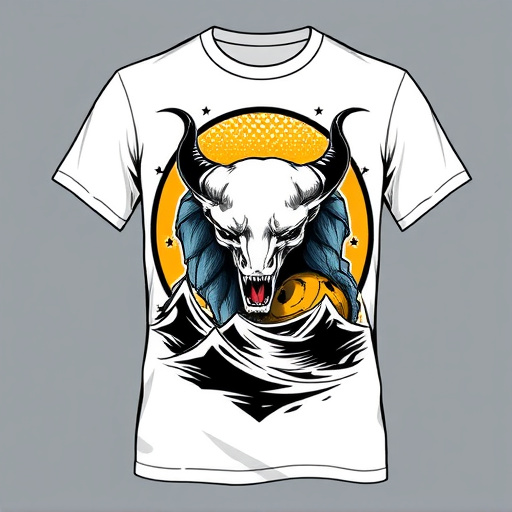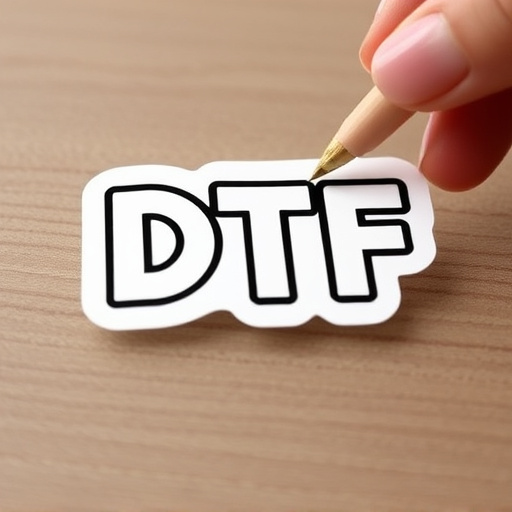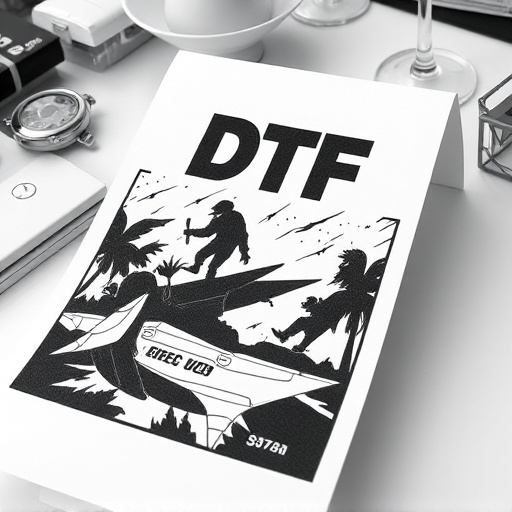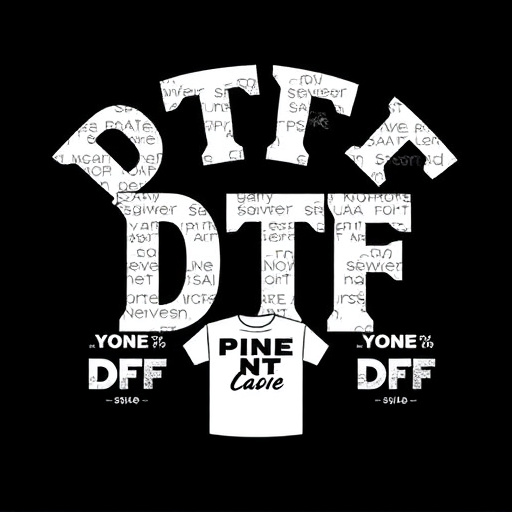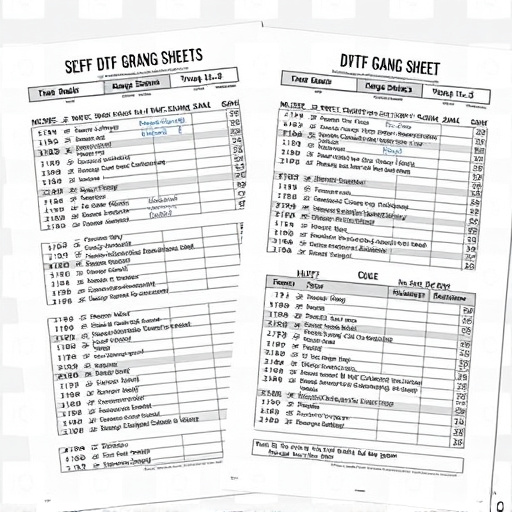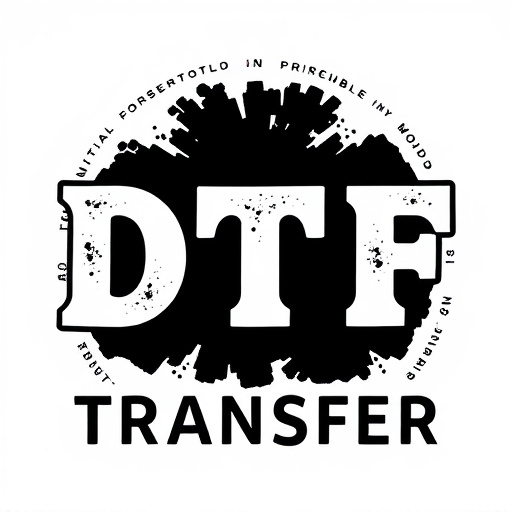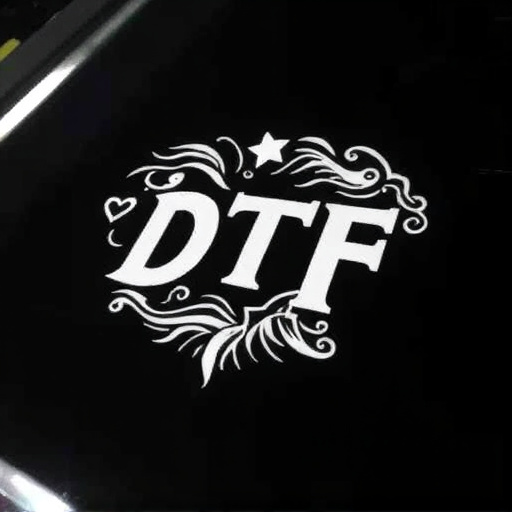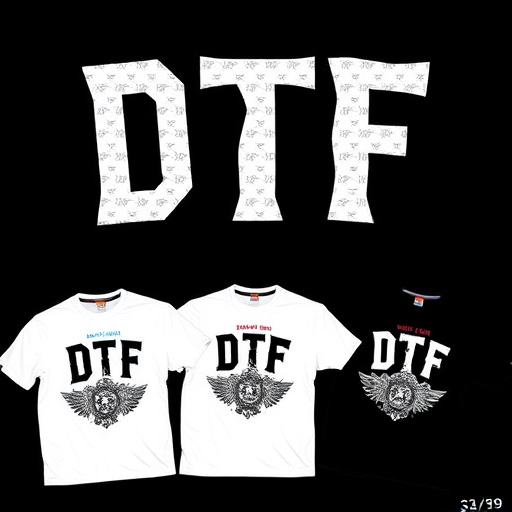Direct-to-Film (DTF) transfers have revolutionized t-shirt and garment customization with their cutting-edge printing method. Using specialized film, DTF prints superiorly clear, vibrant colors and intricate designs onto fabric via advanced inkjet technology. Popular among designers, artists, and entrepreneurs, DTF transfers offer unparalleled versatility for both personal projects and large-scale productions. To achieve exceptional results, select the right materials and equipment: compatible DTF transfer film, reliable printer, high-quality inks, and precision cutting tools. A step-by-step guide provides a straightforward path to mastering DTF transfers, while emphasizing key setup steps and best practices for successful application. DTF transfers are transforming the fashion industry by enabling artists to create unique, personalized garments with endless creative possibilities.
Discover the art of transforming plain t-shirts into captivating fashion statements with Direct-to-Film (DTF) transfers. This innovative technique offers a seamless way to decorate clothing, allowing designers and enthusiasts alike to create vibrant, high-quality designs. In this comprehensive guide, we’ll explore the benefits of DTF transfers, from their ease of use to the vast creative possibilities they offer. Get ready to dive into the world of DTF printing and unlock your t-shirt design potential!
- Understanding Direct-to-Film (DTF) Transfers: A Comprehensive Overview
- Advantages of DTF Transfers for T-Shirt Decorating
- Choosing the Right Materials and Equipment for DTF Printing
- Step-by-Step Guide to Creating Stunning DTF Transfer Designs
- Best Practices for Applying DTF Transfers to T-Shirts
- Creative Ways to Incorporate DTF Transfers in Fashion and Design
Understanding Direct-to-Film (DTF) Transfers: A Comprehensive Overview

Direct-to-Film (DTF) transfers have revolutionized the art of customizing t-shirts and other garments, offering a unique and high-quality printing method. This technique involves transferring ink directly onto the fabric using a specialized film, eliminating the need for traditional screens or plates. DTF Transfers are known for their exceptional clarity, vibrant colors, and ability to produce intricate designs with fine details.
The process begins by creating or obtaining a digital design that meets specific requirements for file format and resolution. This design is then printed onto a thin, flexible film using advanced inkjet technology. The film acts as a temporary carrier, allowing for precise placement of the graphic on the t-shirt during the heat pressing process. DTF Transfers are particularly versatile, suitable for both small-scale personal projects and large-scale commercial productions, making them a popular choice among clothing designers, artists, and entrepreneurs looking to create unique, custom apparel.
Advantages of DTF Transfers for T-Shirt Decorating

Direct-to-film (DTF) transfers offer a range of advantages for decorating t-shirts, making them a popular choice among designers and enthusiasts alike. One of the key benefits is their exceptional quality; DTF Transfers produce vibrant, detailed designs that are virtually indelible, ensuring the artwork remains crisp and colorful even after multiple washes. This technique also allows for a vast array of design possibilities, accommodating both simple graphics and complex imagery with ease.
Moreover, DTF transfers streamline the decoration process. They eliminate the need for intricate screen printing setup, making it accessible to small-scale businesses and individual artists. With direct application to fabric, this method reduces preparation time and minimizes waste, making it an efficient and cost-effective solution for custom t-shirt design.
Choosing the Right Materials and Equipment for DTF Printing

When embarking on DTF (Direct-to-Film) printing for t-shirt decoration, selecting the appropriate materials and equipment is paramount to achieving high-quality results. The first step involves choosing the right DTF transfer film, which comes in various types and finishes tailored to different printing needs. Look for films offering optimal ink absorption for vibrant colors and precise detail reproduction. Ensure compatibility with your printer type, be it a thermal or UV printer, as this will dictate the material’s properties.
Complementing the film choice is the investment in suitable equipment. This includes a reliable DTF printer, high-quality inks designed specifically for direct-to-film application, and precision cutting tools. Consider using heat presses to ensure even and consistent application of the transfer to the t-shirt. Proper preparation of both the design file and printing surface is crucial; use vector graphics for clean lines and precise cuts, and ensure proper alignment to avoid smudging or misprintings.
Step-by-Step Guide to Creating Stunning DTF Transfer Designs

Creating stunning designs using direct-to-film (DTF) transfers for t-shirt decoration is an art that anyone can master with a little practice and creativity. Here’s a step-by-step guide to help you get started:
1. Choose Your Design: Start by selecting or creating the image or text you want to transfer onto your t-shirt. Ensure it’s high-resolution and optimized for printing. You can use graphic design software to prepare your artwork, allowing for precise editing and customization.
2. Prepare Your T-Shirt: Select a blank t-shirt suitable for DTF printing. Pre-wash and dry the shirt to ensure it’s free from any impurities that could affect ink adhesion. Consider using a heat-resistant fabric for best results, especially if your design includes intricate details or multiple colors.
3. Set Up Your Workstation: Gather all necessary materials, including your DTF transfer film, a suitable printer (ideally a high-quality photo printer), and a clear, flat surface for the printing process. Ensure excellent lighting to guide you during the transfer application.
4. Print Your Design: Load your prepared design into your printer and print directly onto the DTF transfer film using high-quality inkjet or laser printers. Make sure the settings are optimized for the type of ink used, whether it’s water-based, solvent, or UV-curable. Follow manufacturer instructions for best results.
5. Transfer the Design: Once your design is printed on the film, carefully cut out the image, ensuring precise edges. Place the transfer face-down onto the t-shirt, aligning it with the desired position. Heat press the transfer using a suitable machine or iron for the recommended time and temperature to ensure a secure bond.
6. Finishing Touches: After cooling down, inspect your DTF transfer to ensure a crisp, clear image. You can add finishing touches like sewing or adding accessories to enhance your design further.
Best Practices for Applying DTF Transfers to T-Shirts

When applying direct-to-film (DTF) transfers to t-shirts, start by preparing your workspace and materials. Ensure a clean, flat surface for application, and gather all necessary tools, including the DTF transfer film, heat press machine, and a clean t-shirt. It’s crucial to follow the manufacturer’s instructions for the specific DTF product you’re using, as slight variations in techniques might apply.
Before placing the transfer on the shirt, preheat both the heat press machine and the t-shirt to the recommended temperature and pressure settings. Align the transfer accurately, ensuring no air bubbles are trapped between the film and the fabric. Apply even pressure and heat for the specified duration, then carefully remove the transfer film. Post-application, allow the shirt to cool down before handling it, and always use a high-quality press to achieve sharp, vibrant prints.
Creative Ways to Incorporate DTF Transfers in Fashion and Design

Direct-to-film (DTF) transfers offer a myriad of creative possibilities in fashion and design, revolutionizing the way we personalize garments. Designers and enthusiasts alike are embracing this technology to craft unique, eye-catching t-shirts. One innovative approach is to create intricate patterns and illustrations using DTF, allowing for complex designs that blend seamlessly with the fabric. This technique enables artists to explore diverse artistic styles, from minimalist line work to vibrant, bold graphics, pushing the boundaries of traditional printing methods.
Additionally, DTF transfers can be used to achieve special effects and textures. By experimenting with different transfer materials and application techniques, creators can add depth, gloss, or matte finishes to their t-shirts. Overlaying multiple transfers or combining them with other decorative elements like embroidery or paint creates a rich, layered aesthetic. This versatility makes DTF an appealing choice for those seeking to express their individuality through fashion, offering endless opportunities for self-expression and design exploration.
